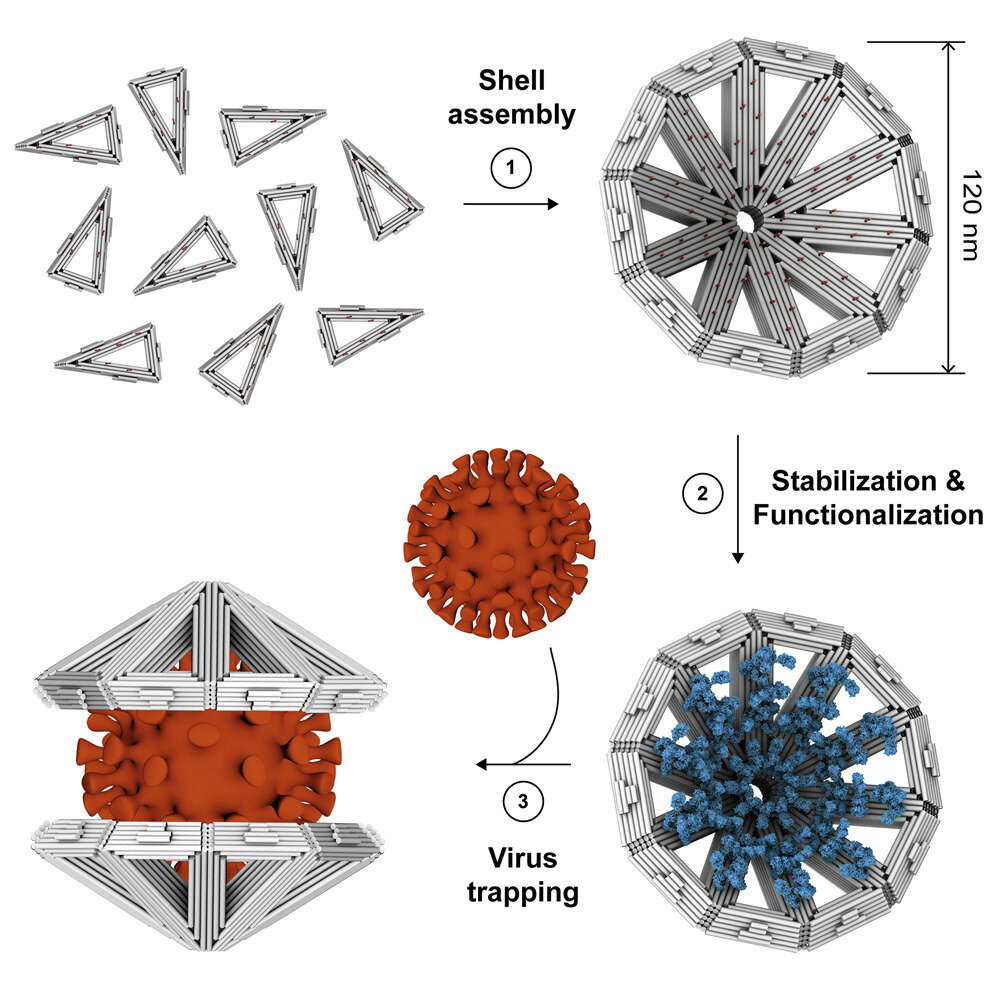Using origami DNA to trap large viruses
Date: 25.1.2023
A team of researchers from the Technical University of Munich and the University of Regensburg, both in Germany, has found that it is possible to build origami DNA structures that can be used to trap large viruses.
 As the global pandemic continues, albeit in a less deadly phase, the medical science community continues to look for ways to prevent people from becoming infected with not just the SARS-CoV-2 virus, but all viruses. One such approach involves the use of structures designed to attract viruses and when they come close enough, to trap them. In this new effort, the researchers have tested the idea of using origami DNA.
As the global pandemic continues, albeit in a less deadly phase, the medical science community continues to look for ways to prevent people from becoming infected with not just the SARS-CoV-2 virus, but all viruses. One such approach involves the use of structures designed to attract viruses and when they come close enough, to trap them. In this new effort, the researchers have tested the idea of using origami DNA.
To create larger traps for larger viruses, the team used both long and short strands of DNA that had been designed to stick together in useful ways. They then used them to create triangular 2D building blocks that when placed near each other would snap together like puzzle pieces. They then set to work creating structures that they believed could serve as virus traps.
The researchers tested their traps with several types of viruses – from Zika, to influenza to SARS-CoV-2 – and found that they worked equally well on all of them. They also found that they could make them more durable by shining a UV light on them and by covering them with an oligosine polymer. They next plan to test their traps in live lab animals.
Image source: Monferrer et al. (2023), Cell Reports Physical Science.























